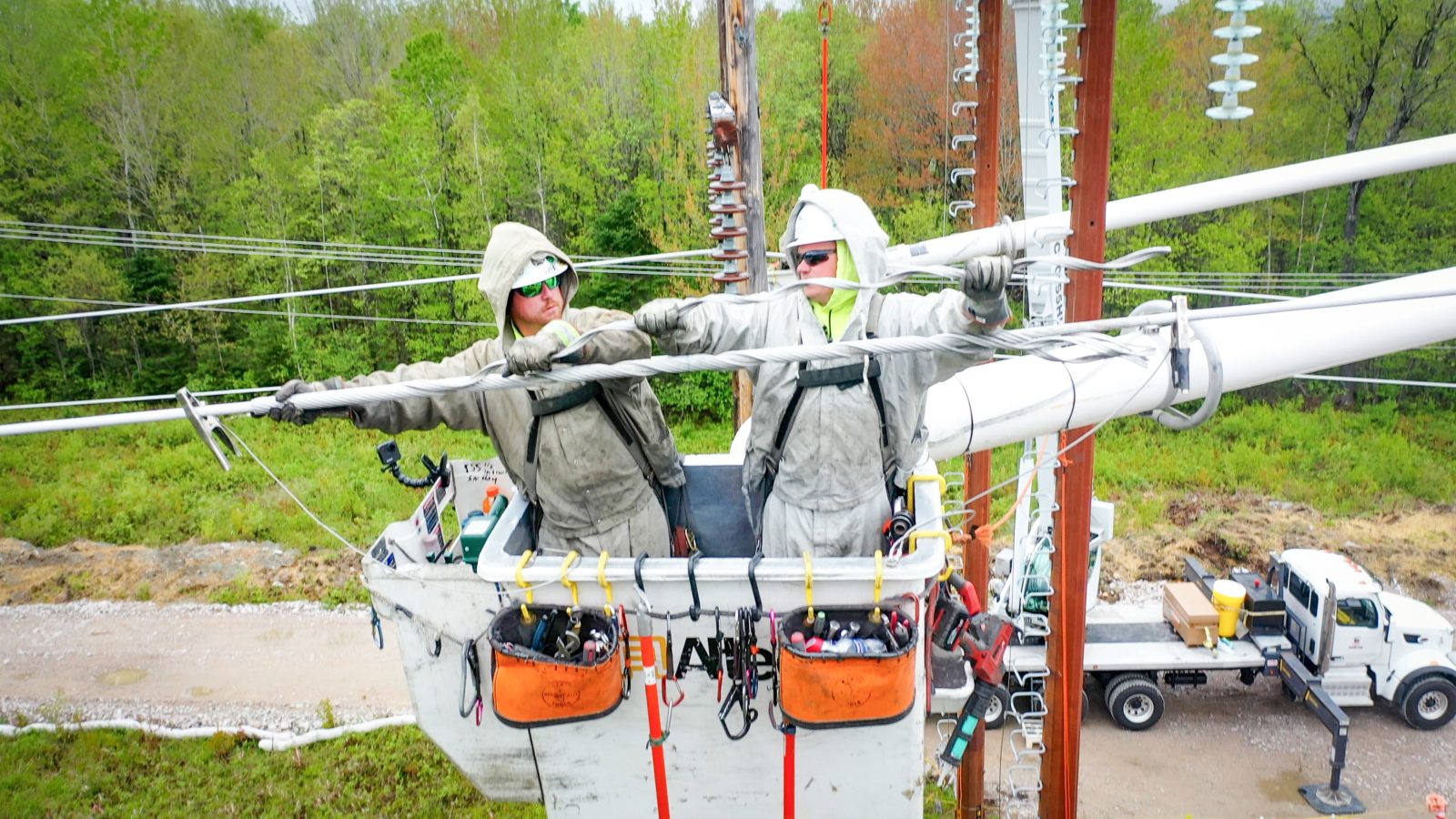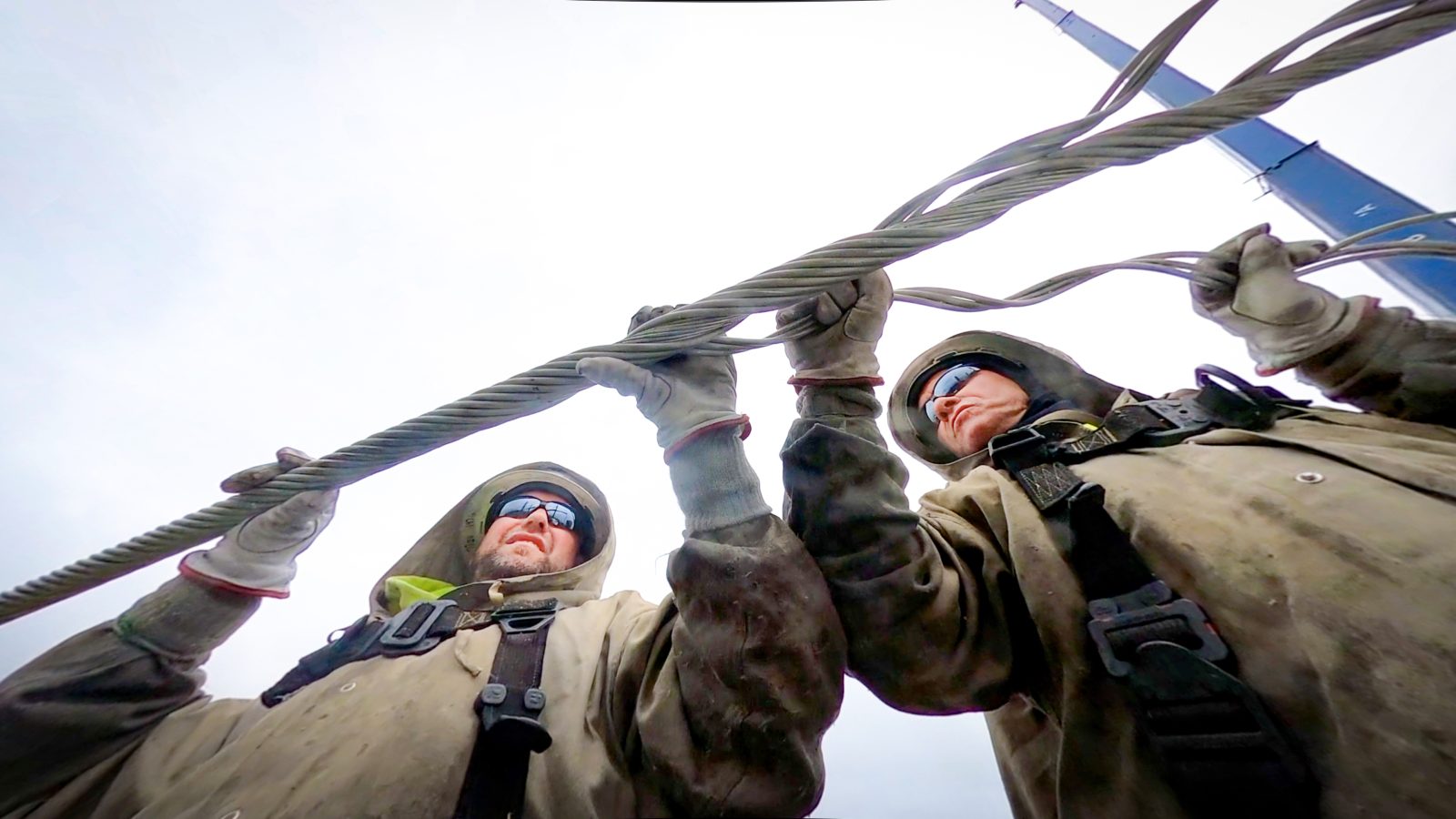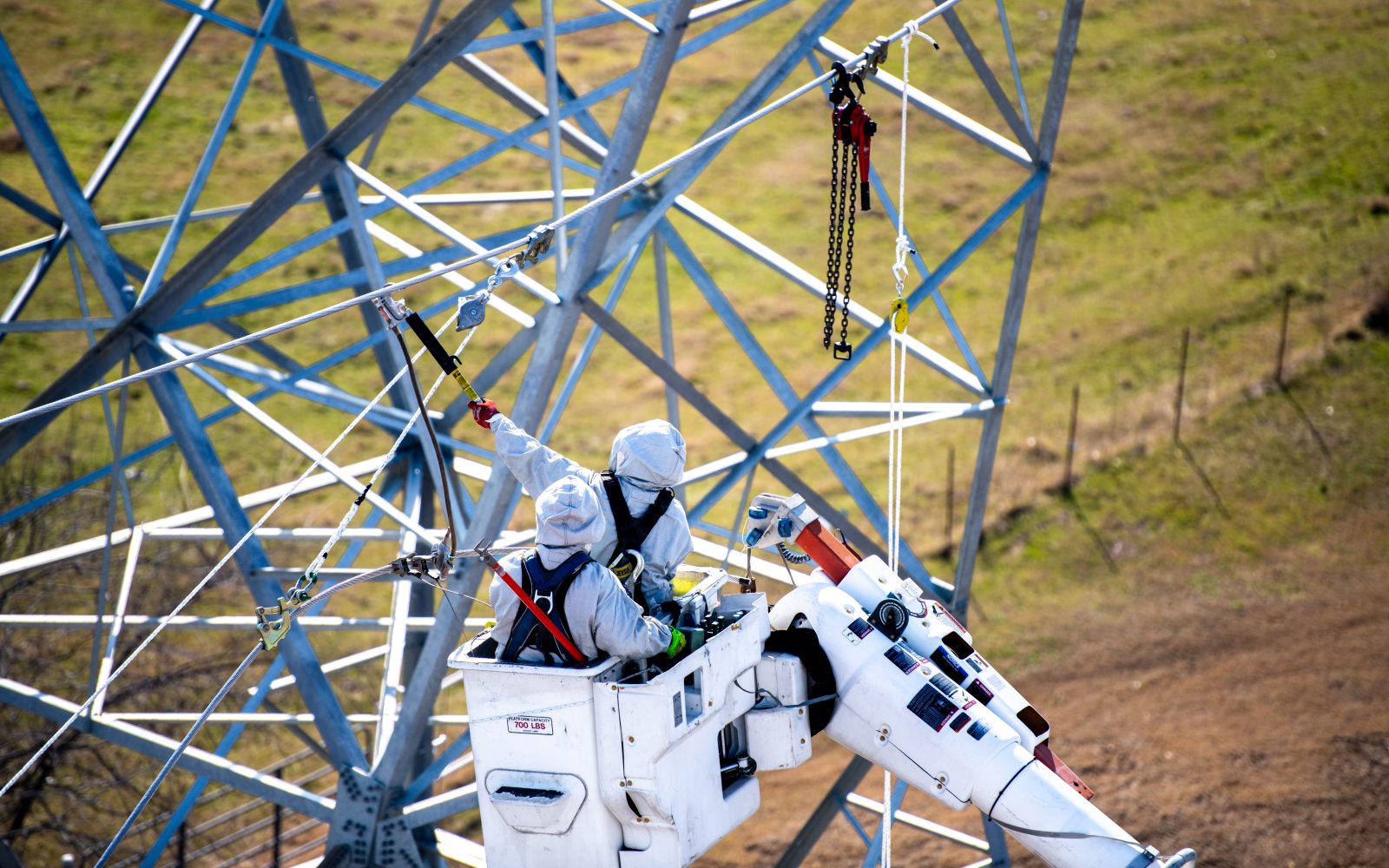
July 1, 2025 Harlan Electric Performs Important Energized Construction for Customers
Harlan Electric, Fellow MYR Group subsidiary Great Southwestern Construction launched live-line Barehand programs in 2019
Understanding the needs and goals of a partner is the cornerstone of every healthy relationship.
You must listen and care. It’s essential.
Harlan Electric (Harlan) and Great Southwestern Construction (Great Southwestern) had maintained long-lasting relationships with utilities in their area because they understood this basic requisite of a partnership.
And so, they listened.
It just so happened that around the same time in 2018, both MYR Group subsidiaries independently started hearing the same thing – energized construction was the future.
If they wanted to keep those strong relationships going, they would need to demonstrate the ability to perform live-line barehand work and help their customers reduce outages and all the complications that stem from lines being out of service.
And so, they cared.
Despite the investment it would take for Harlan and Great Southwestern to launch completely new barehand programs from scratch, neither company’s leadership hesitated.
Working the Line “Hot”
Energized work methods allow utilities to maintain uninterrupted service on their systems. This minimizes disruptions to power customers and lowers the utility’s operational costs. Hot sticking is one form of energized work, where a lineworker uses an insulated stick to work on live high-voltage electrical equipment (commonly referred to as “hot” lines).
Live-line barehand work, however, is a specialized form of energized work where a lineworker performs their tasks at the same potential as the conductor they’re working on. This is achieved by wearing a unique suit made from fire-retardant materials and stainless-steel fibers, creating a Faraday Cage.
It’s a compliment to our crews. … We’ve been able to keep very good crews. And because of that, we’ve been able to take on so much more work, expand the workforce, and then maintain the workforce.
Harlan Electric District Manager Chris Lenahan
Essentially, the electrical charge flows around the outside of the suit and not through the lineworker’s body. To do this, the lineworker “bonds on” to the conductor, which flows the charge around the suit and protects the worker inside the electrical field.
A robust training program is critical for lineworkers to fully understand the technique and build the necessary skills to safely perform the work.
“It’s the mindset that comes along with it that I think separates people because you can work in a de-energized setting and make mistakes and get away with it,” Great Southwestern Construction Manager Tyler Mathis said. “But in the energized setting, the things that you can get away with working de-energized versus working it hot are 100 percent different.
“So, I think along with the skill comes a different mindset. There are a lot more technical aspects that you’re constantly having to weigh and consider, and plan for. You must be 100 percent prepared, and there is no room for error.”
Building Barehand Program from the Ground Up
Harlan also sought out experienced live-line barehand lineworkers to help build the program, with superintendents Mike Collins and Justin Evans playing an essential role.
“If it wasn’t for them, we wouldn’t be here,” Harlan District Manager Chris Lenahan said. “They brought in the people and helped us build out the program.”
Utilities weren’t keen on the idea of allowing lineworkers to train on their systems, which meant finding hands-on ways to practice was the most significant hurdle to overcome.

“It was a struggle for us to get our crews trained in practical settings,” Lenahan said. “We used the yard here in New Hampshire, we used a training yard in New York, we built an H-frame structure in our warehouse to be able to do some practical training because we had the lack of a training yard.”
Harlan eventually found a way, creating a single crew of 10 lineworkers certified in live-line barehand work. Since then, the group has only grown.
The success of Harlan and Great Southwestern’s training programs led to the creation of the Live Line Academy, MYR Group’s energized training facility located in Alvarado, Texas.
There, lineworkers from MYR Group subsidiaries can receive live-line barehand training on a variety of energized structures in a safe and controlled environment and avoid the hurdles Harlan faced early on while launching its program in 2019.
Successful Portfolio of Energized Work
Harlan’s live-line barehand training program proved to be a tremendous success. They went from handling small installations and replacements in 2019 to full 100 and 115kV structure replacements later in the year, before finally winning full energized line rebuilds.
“The customer said that our program is the pinnacle of the energized barehand programs that they’ve seen and hold ours as the standard,” Collins said.
Harlan won a NECA Project Excellence Award in 2023 for the X116/Z119/S188/R187 transmission project – a complex structure replacement project requiring 252 structure replacements across four different 115kV transmission lines in the same right of way (ROW).

Today, Harlan has four energized crews and upwards of 40 certified live-line barehand lineworkers. They’re currently working on the S136 Live-Line Rebuild project, which includes 215 structure replacements and 27 miles of reconductor and optical ground wire in the rugged terrain and weather of New Hampshire.
They’ve also come to find that safety performance on energized projects is better than on de-energized work, thanks to the training and intense focus required of live-line jobs, and have never had an OSHA recordable incident on energized work.
“It’s a compliment to our crews. The original crew that we put through our first live-line training, 90 percent of those lineworkers are still here,” Lenahan said. “We’ve been able to keep very good crews. And because of that, we’ve been able to take on so much more work, expand the workforce, and then maintain the workforce.
“They have a high level of focus on the energized side, which is great for the customer and for us as a contractor. The safer we are, the better we are.”


